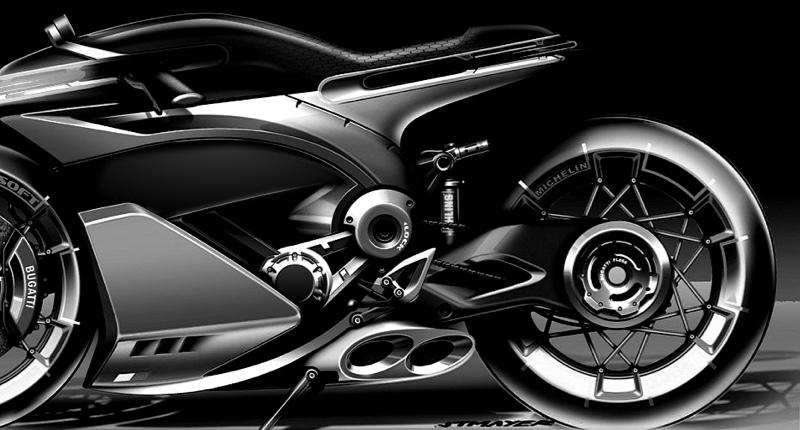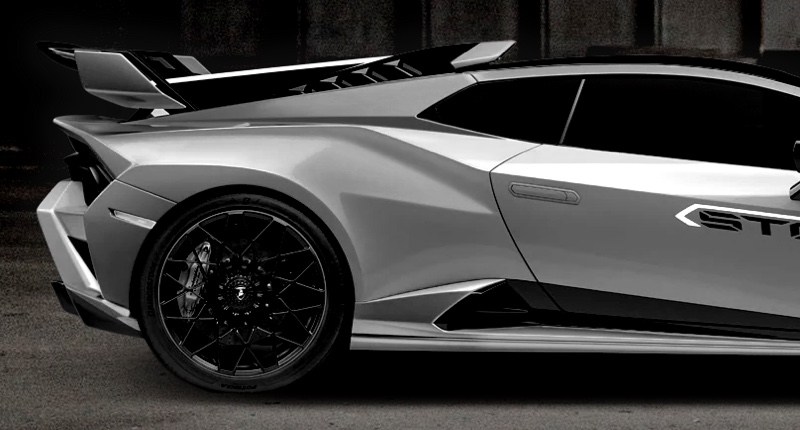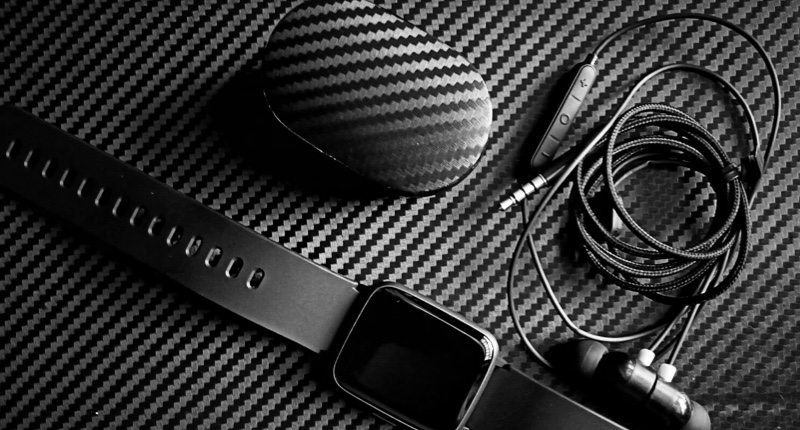Manufacturing Process: Dry Carbon vs Wet Carbon
- Manufacturing Process: Dry Carbon vs Wet Carbon
- Introduction — Why understanding dry carbon vs wet carbon matters for buyers
- What is dry carbon (prepreg/autoclave) — industrial-grade, performance-focused manufacturing
- What is wet carbon (hand layup/RTM/infusion) — flexible, cost-effective production
- Manufacturing steps — clear process differences between dry carbon vs wet carbon
- Comparison table — dry carbon vs wet carbon at a glance
- Mechanical performance and safety — why dry carbon often leads
- Surface quality, aesthetics and fitment — appearance matters for visible parts
- Cost structure and production scalability — balancing economics and quality
- Lead time, repeatability and commercial procurement — what to expect
- Repairability and maintenance — practical differences in the field
- Environmental and safety considerations — manufacturing impacts
- When to choose dry carbon vs wet carbon — guidance for buyers of carbon fiber parts
- Supreem Carbon — capabilities and why our customers choose us
- Quality assurance and testing — what to request when ordering
- Practical checklist before you buy dry carbon or wet carbon parts
- FAQ — Common questions about dry carbon vs wet carbon
- Q: Which is stronger: dry carbon or wet carbon?
- Q: Can wet carbon look as good as dry carbon?
- Q: Is dry carbon always worth the cost?
- Q: Which process is better for custom or one-off parts?
- Q: How do I specify quality when ordering?
- Contact sales / View products
- Sources
Manufacturing Process: Dry Carbon vs Wet Carbon
Introduction — Why understanding dry carbon vs wet carbon matters for buyers
Choosing between dry carbon vs wet carbon affects cost, performance, and appearance for carbon fiber parts. Whether you're sourcing carbon fiber motorcycle parts, carbon fiber automobile parts, or customized carbon fiber parts, understanding the manufacturing distinctions helps you buy the right product. This article explains the processes, compares outcomes, and provides actionable advice for purchasing and specification.
What is dry carbon (prepreg/autoclave) — industrial-grade, performance-focused manufacturing
Dry carbon commonly refers to parts made using pre-impregnated fiber (prepreg) cured under controlled heat and pressure—typically in an autoclave or sometimes via press curing. In this process, carbon fiber fabric is pre-coated with a carefully measured resin by the material manufacturer. The component is laid into molds, vacuum-bagged, and cured at elevated temperature and pressure to consolidate the laminate and remove voids. The result is a high-strength, high-fiber-volume, low-porosity component with a High Quality surface finish. keywords: if you intend to buy dry carbon parts, expect higher prices but superior performance and finish.
What is wet carbon (hand layup/RTM/infusion) — flexible, cost-effective production
Wet carbon indicates a process where dry carbon fabrics are placed into molds and resin is added during fabrication (hand layup), or injected via resin transfer molding (RTM) or vacuum infusion. Wet processes are common for lower-volume production or where tooling costs must be minimized. Resin content and consolidation are generally less tightly controlled than with prepreg/autoclave systems, so parts can be heavier, with higher void content and more variability between parts. keywords: for budget-friendly custom carbon fiber parts, wet carbon often offers lower upfront cost and faster turnaround.
Manufacturing steps — clear process differences between dry carbon vs wet carbon
Understanding each process's steps clarifies why properties differ. Dry carbon (prepreg) involves material supply (prepreg rolls), layup in heated molds, vacuum-bagging, autoclave cure, and finishing. Wet carbon processes involve mold preparation, fabric layup or placement, resin application or injection, vacuum consolidation (for infusion), cure at ambient or elevated temperature, and finishing. Differences in process control (temperature, pressure, resin chemistry) drive mechanical and cosmetic outcomes.
Comparison table — dry carbon vs wet carbon at a glance
Below is a concise comparison highlighting typical ranges and practical differences. Values are representative ranges; actual performance depends on materials and quality control.
| Attribute | Dry Carbon (Prepreg/Autoclave) | Wet Carbon (Hand Layup/Infusion/RTM) |
|---|---|---|
| Typical fiber volume fraction | 55–65% (higher) | 35–50% (lower) |
| Resin content | 35–45% (controlled) | 50–65% (variable) |
| Void content | Low (<2–5%) | Higher (can be 5–15% without strict QC) |
| Mechanical performance (strength/stiffness) | Superior, consistent | Good, more variable |
| Surface finish | Glossy, mirror-like; ideal for visible parts | Variable; often requires more trimming and filler |
| Tooling & equipment cost | High (autoclave, heated tools) | Lower (basic molds, infusion equipment) |
| Unit cost | Higher per part | Lower per part |
| Best use case | High-performance components, show-quality aesthetic parts | Lower-cost customizations, large or complex shapes, prototyping |
Source notes for table values are listed at the article end.
Mechanical performance and safety — why dry carbon often leads
Dry carbon parts cured in autoclaves typically achieve higher fiber volume fraction and lower void content, translating into higher tensile, compressive, and fatigue properties. For automotive and motorcycle structural or load-bearing uses—such as chassis components, control arms, or suspension parts—these properties can be critical. Wet carbon parts can be engineered for non-structural cosmetic components like body panels and fairings, but if you need high, repeatable strength and fatigue life, dry carbon (prepreg) is the safer choice.
Surface quality, aesthetics and fitment — appearance matters for visible parts
Dry carbon is favored for visible aftermarket parts because the prepreg process yields a consistent weave pattern, smooth resin distribution, and deep glossy finish after clear-coating. Wet carbon can look excellent when expertly finished, but it often requires more sanding, filling, and coating to achieve a comparable showroom finish. If you want the classic '3D twill' or 'plain weave' mirror finish on a carbon fiber automobile part or motorcycle fairing, specify dry carbon manufacturing or ensure finish and QA standards are contractually defined when you buy wet carbon parts.
Cost structure and production scalability — balancing economics and quality
Dry carbon production involves higher fixed costs: prepreg material is more expensive, autoclaves and heated tooling cost more, and skilled labor for precise layup is necessary. Consequently, unit costs are higher, especially at low volumes. Wet carbon offers lower tooling and material costs and faster setup, making it attractive for small runs, prototypes, or customized carbon fiber parts where budgets are tighter. For manufacturers and buyers, the choice is often a balance between required part performance and allowable budget.
Lead time, repeatability and commercial procurement — what to expect
Dry carbon parts usually require longer lead times due to precise layup and autoclave scheduling, but deliver better repeatability—critical for larger production runs where consistency reduces warranty costs. Wet carbon can be faster to produce and iterate for design changes. If you're procuring custom carbon fiber parts, specify acceptable tolerances, surface finish, and mechanical targets up front to ensure your supplier meets expectations, whether they use dry carbon or wet carbon methods.
Repairability and maintenance — practical differences in the field
Because dry carbon parts have higher fiber volume and lower porosity, localized repair sometimes requires specialist techniques (prepreg patches and heat cure) to restore original properties. Wet carbon repairs are often performed with wet layup patches and ambient cure resins—easier in-field but with potentially lower restored strength. For motorcycle or automobile enthusiasts who expect occasional damage, consider how repairable the chosen construction is and whether local repair shops can service the material and method you select.
Environmental and safety considerations — manufacturing impacts
Both methods use epoxy or polyester resins, solvents, and composites waste. Dry carbon (prepreg) reduces onsite resin handling and solvent emissions at the layup stage because resin is pre-applied; however, prepreg waste and offcuts require controlled disposal. Wet layup involves resin mixing and potential VOC emissions unless low-VOC systems or infusion methods are used. For buyers valuing green practices, ask suppliers about waste management, resin VOC controls, and whether they use infusion and closed-mold techniques to minimize emissions and waste.
When to choose dry carbon vs wet carbon — guidance for buyers of carbon fiber parts
If your priority is structural performance, consistent quality, or show-quality surfaces for visible carbon fiber motorcycle parts and carbon fiber automobile parts, choose dry carbon (prepreg/autoclave). If your priority is cost control, faster prototyping, or producing larger items where autoclave size is limiting, wet carbon is a pragmatic option. For customized carbon fiber parts where appearance and fit matter, ensure the supplier offers clear sample approvals and professional finishing regardless of the core process.
Supreem Carbon — capabilities and why our customers choose us
Supreem Carbon, established in 2017, is a customized manufacturer of carbon fiber parts for automobiles and motorcycles, integrating R&D, design, production, and sales to deliver high-quality products and services. We specialize in the technology research and development of carbon fiber composite products and the production of related items. Our main offerings include the customization and modification of carbon fiber accessories for vehicles, as well as the manufacturing of carbon fiber luggage and sports equipment.
Our factory spans approximately 4,500 square meters and employs 45 skilled production and technical staff, achieving an annual output value of around 4 million dollars. Currently, we offer over 1,000 types of products, including more than 500 customized carbon fiber parts. Our vision is to become the world's leading carbon fiber products manufacturer. Learn more at https://www.supreemcarbon.com/.
Why Supreem Carbon fits both dry carbon and wet carbon buyers: we combine R&D-driven process selection with the production flexibility to deliver high-quality carbon fiber motorcycle parts, carbon fiber automobile parts, and fully customized carbon fiber parts. For customers requiring prepreg/autoclave-level performance, we apply strict material and curing controls. For cost-sensitive customizations, our wet-layup and infusion expertise allows competitive pricing without sacrificing fit or finish.
Quality assurance and testing — what to request when ordering
Ask suppliers for documentation: fiber type and tow size, resin system and cure schedule, fiber volume fraction targets, void content measurements (if available), and test reports for tensile, flexural, or fatigue properties relevant to your application. Supreem Carbon conducts process checks and product verification aligned with customer specifications; when buying carbon fiber parts, require sample approval and non-destructive inspection (where feasible) for critical components.
Practical checklist before you buy dry carbon or wet carbon parts
Before placing an order, confirm: 1) Application (structural vs cosmetic); 2) Required mechanical targets and safety margins; 3) Surface finish and clear-coat expectations; 4) Acceptable lead times and per-unit cost; 5) Repair strategy and warranty terms; 6) Supplier capability to provide sample approvals and batch traceability. This reduces mismatch between expectations and delivered products when buying custom carbon fiber parts.
FAQ — Common questions about dry carbon vs wet carbon
Q: Which is stronger: dry carbon or wet carbon?
A: Generally, dry carbon (prepreg cured under heat and pressure) achieves higher strength and stiffness due to higher fiber volume and lower void content. However, a well-made wet carbon part tailored for non-structural use can still be adequate depending on design and resin choice.
Q: Can wet carbon look as good as dry carbon?
A: Yes, with skilled finishing (sanding, filler, clear-coating) wet carbon can appear very attractive. For mirror-like finishes and minimal post-processing, dry carbon is more consistent out of mold.
Q: Is dry carbon always worth the cost?
A: Not always. If your part is primarily cosmetic or the project budget is tight, wet carbon provides a good balance. For critical, structural, or High Quality visual applications, dry carbon justifies the price.
Q: Which process is better for custom or one-off parts?
A: Wet carbon and vacuum infusion are often better for one-off or low-volume parts due to lower tooling and material costs. Dry carbon becomes economical when repeatability and high performance are required at scale.
Q: How do I specify quality when ordering?
A: Specify resin system, fiber type, target fiber volume fraction, acceptable void content, surface finish class, and required mechanical test reports. Request samples and a defined approval process before full production.
Contact sales / View products
If you need help deciding between dry carbon vs wet carbon for your project or want a quote for custom carbon fiber parts, contact Supreem Carbon. Visit our product catalog and contact page at https://www.supreemcarbon.com/ to view carbon fiber motorcycle parts, carbon fiber automobile parts, and customized carbon fiber parts. For a tailored quote, request sample approval and discuss production methods to match your performance and budget needs.
Sources
- CompositesWorld — industry articles and technology guides on prepreg and wet layup processes (CompositesWorld editorial and technical reports)
- Hexcel Corporation — prepreg technical datasheets and material guidance for fiber volume and cure practices
- Automotive Composites Consortium (ACC/USCAR) — reports on composite manufacturing for automotive applications
- Journal of Composite Materials — peer-reviewed papers on fiber volume fraction, void content, and mechanical properties of composite laminates
- Supplier and manufacturing best practices, industry technical white papers on vacuum infusion and RTM
Best professional carbon fiber guitar manufacturers and supplier brands

The Ultimate Guide to Motorcycle Carbon Fiber Accessories | Supreem Carbon
Best professional carbon fiber canoe manufacturers and supplier brands
Supreem Carbon Best professional carbon fiber shaft manufacturers and supplier brands
For Products
Are you parts have UV protected?
Absolutely! We use multiple layers of premium quality automotive clear (or matt) coats on our products, which ensure that they will remain super pretty for years to come.
For Facotry
When is Supreem carbon founded?
Our company formally established in early 2017.
Can I visit your company?
Of course, we are in QiaoTou Town, Dongguan City, Guangdong Province, China.
For After-sales Service
Do you offer a warranty?
Six month standard warranty on all products. Damage due to installation error or natural elements will not be covered.
For Customized Service
What can be customized in addition to customized carbon fiber parts?
You can customize your company logo, packaging, even the color of coating and so on.

Yamaha R1 Carbon Fiber Side Fairings
Introducing the Supreem Carbon Fiber Long Side Panels for Yamaha R1. Crafted with precision and expertise, this front side fairing is designed to elevate the performance and aesthetics of your R1. Made from high-quality carbon fiber, this fairing is not only lightweight but also incredibly durable, providing optimal protection for your motorcycle.

Yamaha R1 Carbon Fiber Airbox Tank Cover
The Supreem Carbon Yamaha R1 Carbon Fiber Airbox Tank Cover provides lightweight, durable protection with a sleek finish. Designed for R1 models, it enhances the style and performance of your bike. Its lightweight structure improves performance while maintaining the premium aesthetics necessary for high-end modification projects. As a dedicated manufacturer of carbon fiber parts, we provide stable production capacity, customization options, and strict quality control to support enterprise-level procurement and OEM/ODM needs.

Carbon Fiber Rear Seat Panel for BMW S1000R & M1000RR – Lightweight Performance
This carbon fiber rear seat panel is engineered for the BMW S1000R and M1000RR, offering superior rigidity, reduced weight, and a premium racing finish. Produced with autoclave technology and strict QC standards, the part ensures consistent OEM-level fitment. Supreem Carbon provides wholesale supply, stable bulk production, and customized solutions for global clients.

High-Performance Carbon Fiber Rear Undertail for BMW S1000R
Engineered for distributors, tuning brands, and motorcycle accessory businesses, the BMW S1000R Carbon Fiber Rear Undertail is a high-quality, durable, lightweight carbon fiber upgrade for the S1000R platform. This component is manufactured using aerospace-grade carbon fiber and precision molds to deliver superior stiffness, a seamless OEM-level fit, and a premium visual finish suitable for high-end aftermarket applications.
© 2024 Supreem Carbon All Rights Reserved.





Facebook
Pinterest
LinkedIn
Instagram